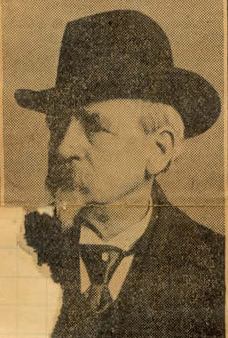William Bell (photographer)
William Bell (1830 – 1910) was a prominent British photographer known for his pioneering work in the field of photography during the 19th century. Bell's contributions to photography, particularly in the development of photographic techniques and the documentation of historical events and figures, have made him a significant figure in the history of the medium.
Early Life and Education[edit | edit source]
William Bell was born in Liverpool, England, in 1830. Little is known about his early life and education, but it is believed that he developed an interest in photography from a young age. During the 1850s, photography was still in its infancy, and Bell was among the early adopters of this new form of art and documentation.
Career[edit | edit source]
Bell's career in photography began in the 1850s when he started working as an apprentice for a local photographer in Liverpool. His talent and skill quickly became apparent, and by the 1860s, he had established his own photography studio. Bell's work covered a wide range of subjects, including portrait photography, landscape photography, and documentary photography.
One of Bell's most notable contributions to photography was his work during the American Civil War. In the early 1860s, Bell traveled to the United States and documented various aspects of the war, capturing the harsh realities of battle and the human cost of the conflict. His photographs from this period are considered some of the earliest examples of war photography and provide a valuable historical record of the time.
In addition to his war photography, Bell was also known for his portraits of prominent figures of the day. He photographed many notable individuals, including politicians, artists, and members of the British Royal Family. His portraits were highly regarded for their quality and detail, and they contributed to his reputation as one of the leading photographers of his time.
Techniques and Innovations[edit | edit source]
Bell was an innovator in the field of photography, experimenting with new techniques and technologies to improve the quality of his work. He was one of the early users of the wet plate collodion process, a photographic technique that allowed for shorter exposure times and greater detail in photographs. Bell's mastery of this process enabled him to capture images with remarkable clarity and depth.
Legacy[edit | edit source]
William Bell's legacy in the world of photography is significant. His work not only provides a visual record of the 19th century but also showcases the evolution of photography as a form of art and documentation. Bell's contributions to the development of photographic techniques and his pioneering work in war photography have earned him a place among the great photographers of his time.
Death[edit | edit source]
William Bell passed away in 1910, leaving behind a body of work that continues to be studied and admired by photographers and historians alike. His photographs remain a valuable resource for those interested in the history of photography and the 19th century.
Search WikiMD
Ad.Tired of being Overweight? Try W8MD's physician weight loss program.
Semaglutide (Ozempic / Wegovy and Tirzepatide (Mounjaro / Zepbound) available.
Advertise on WikiMD
|
WikiMD's Wellness Encyclopedia |
| Let Food Be Thy Medicine Medicine Thy Food - Hippocrates |
Translate this page: - East Asian
中文,
日本,
한국어,
South Asian
हिन्दी,
தமிழ்,
తెలుగు,
Urdu,
ಕನ್ನಡ,
Southeast Asian
Indonesian,
Vietnamese,
Thai,
မြန်မာဘာသာ,
বাংলা
European
español,
Deutsch,
français,
Greek,
português do Brasil,
polski,
română,
русский,
Nederlands,
norsk,
svenska,
suomi,
Italian
Middle Eastern & African
عربى,
Turkish,
Persian,
Hebrew,
Afrikaans,
isiZulu,
Kiswahili,
Other
Bulgarian,
Hungarian,
Czech,
Swedish,
മലയാളം,
मराठी,
ਪੰਜਾਬੀ,
ગુજરાતી,
Portuguese,
Ukrainian
Medical Disclaimer: WikiMD is not a substitute for professional medical advice. The information on WikiMD is provided as an information resource only, may be incorrect, outdated or misleading, and is not to be used or relied on for any diagnostic or treatment purposes. Please consult your health care provider before making any healthcare decisions or for guidance about a specific medical condition. WikiMD expressly disclaims responsibility, and shall have no liability, for any damages, loss, injury, or liability whatsoever suffered as a result of your reliance on the information contained in this site. By visiting this site you agree to the foregoing terms and conditions, which may from time to time be changed or supplemented by WikiMD. If you do not agree to the foregoing terms and conditions, you should not enter or use this site. See full disclaimer.
Credits:Most images are courtesy of Wikimedia commons, and templates, categories Wikipedia, licensed under CC BY SA or similar.
Contributors: Prab R. Tumpati, MD

